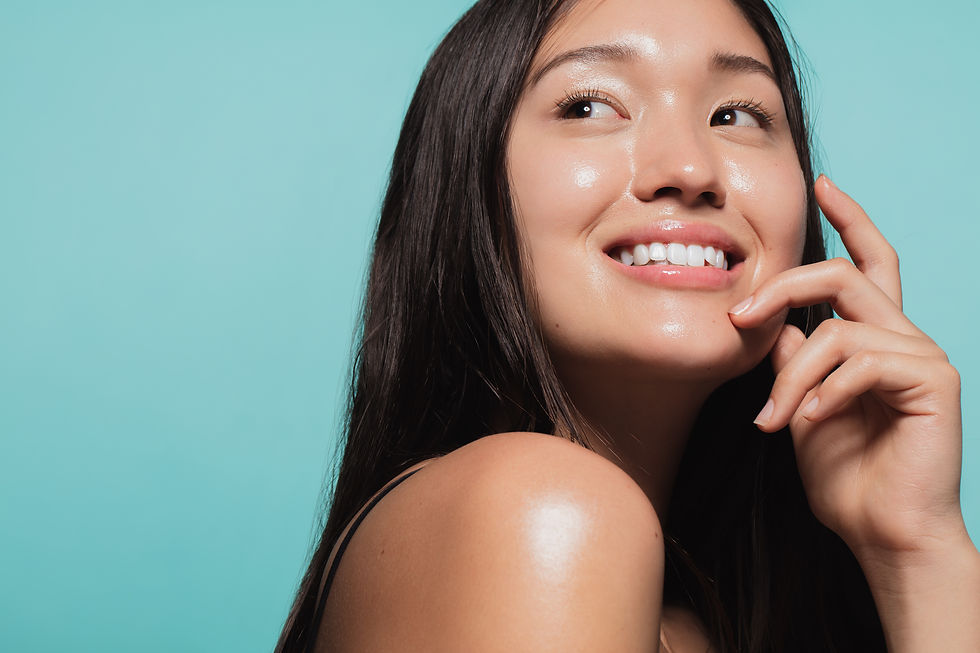The Science of Pigmentation: Part 2
- Dr Fab

- Sep 20, 2020
- 3 min read
Updated: Oct 1, 2020
Preventing hyperpigmentation
With hyperpigmentation, prevention is better than cure. The best ways to prevent the formation of your dark spots is to reduce exposure to the sun and prevent inflammation.

Wearing SPF
Melanin is the body's natural sunscreen. The greater the UV exposure, the more melanin that is produced. It is therefore vital to wear sun protection, so that the UV radiation can be absorbed by your SPF.
Here are some key points when it comes to SPF:
SPF 30- 50 should be worn daily.
Wear SPF indoors (UV B penetrates windows)
Wear on cloudy days
Reapply every 2 hours
Use a chemical SPF if you're concerned about a white cast

Reduce inflammation
Anything that causes irritation to the skin's tissue can potentially lead to inflammation. Acne is the main cause of inflammation. It is important to have a diligent skincare routine to prevent your acne from causing post-inflammatory hyperpigmentation.

Your method of exfoliation, might also be contributing to hyperpigmentation; harsh scrubs and brushes may actually cause micro-trauma to the skin and this leads to hyperpigmentation.
Managing hyperpigmentation
Melanin is created inside the melanocyte by the enzyme tyrosinase. Overactivity of this enzyme leads to too much melanin and subsequently hyperpigmentation. In order to reduce hyperpigmentation we need to stop the tyrosinase enzyme from doing too much.

It is much harder to reduce hyperpigmentation than it is to prevent it. Most ingredients work by inhibiting the tyrosinase the enzyme that converts tyrosine into melanin.

Hydroquinone
The most effective tyrosinase inhibitor. It is used by dermatologists to treat skin conditions such as melasma, however it is often abused by those who want to bleach their skin. Unregulated use can lead to a blue-ish discolouration of the skin, rebound hyperpigmentation, liver damage and even cancer.
Retinoids
Retinoids come from vitamin A. They are both prevention and cure for hyperpigmentation. They reduce acne- induced inflammation and help to depigment areas of hyperpigmentation by inhibiting the tyrosinase enzyme.

Azaelic Acid
Azaelic acid inhibits the tyrosinase enzyme preventing tyrosine from being converted into melanin. It also prevents melanocytes from proliferating.
Kojic Acid
Kojic acid acid inhibits the tyrosinase enzyme preventing tyrosine from being converted into melanin. It is often used alongside glycolic acid and hydroquinone to improve its efficacy.

Arbutin
Extracted from pear and cranberry plants, Arbutin prevents tyrosine from being converted into melanin but also prevents melanin from being packaged into the melanosome.

Niacinamide
Niacinamide (Vitamin B3) prevents the packaging of melanin into the other skin cells.

Ascorbic acid (Vitamin C)
Vitamin C is derived from citrus fruits. It has anti-inflammatory properties, which prevents the formation of hyperpigmentation. It also protects against UV-radiation and inhibits tyrosine from converting tyrosine into melanin.


Skin peels
Skin peels such as glycolic acid, lactic acid or mandelic acid work by removing the upper layers of dead and dying skin cells, which encourages the turnover of younger, fresher skin. It is important to use a lower strength of these chemical peels when dealing with dark skin, as strengths that are too high can lead to irritation and inflammation.

Murad Vita-C Glycolic Brightening Serum
The sunshine vitamin Vitamin D also known as the ‘sunshine vitamin’ can be ingested orally from foods such as fish and dairy or can be taken as a supplement. Once in the body, it is converted by sunlight to its active form. Due to high levels of melanin, blocking the sunlight, black people are often deficient in vitamin D which is hugely important for bone and skin health. In the skin, it has anti-inflammatory and antimicrobial properties. A deficiency in vitamin D can therefore exacerbate conditions such as acne. It is important therefore for individuals with darker skin tones to regularly measure vitamin D levels and replace as appropriate.
A note on melanoma
Melanoma is the most dangerous type of skin cancer. It is much less common in skin of colour but when it does occur, it is more lethal. This is due to a delayed diagnosis and lack of awareness of the fact that melanoma can and does occur in skin of colour. As well as this, melanoma in skin of colour most often occurs in unusual areas of the body such as the nailbed and soles of feet.

Conclusion
It is easier to prevent hyperpigmentation by reducing exposure to the sun and reducing the causes of inflammation. Once hyperpigmentation occurs, the key is to target the tyrosinase enzyme that is responsible for the overproduction of melanin.







Comments